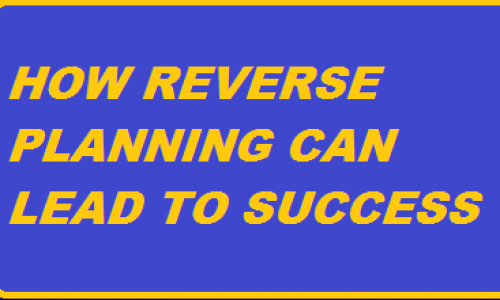A recent study conducted by researchers from the University of Iowa, the Peking University HSBC Business School, and the Korea University of Business looked into how different goal setting techniques affected student volunteers.
The researchers studied how the students approached their long-term goals, such as taking final exams or going on important job interviews.
Some students followed the typical planning format, listing baby steps in chronological order. Other students, however, listed their to-do list in reverse order, first examining the steps that happen right before their goal and then working backwards to what would normally be thought of as the first step. Consider it Benjamin Button-style planning.
Planning in chronological or reverse order didn’t affect short-term goals, like getting daily housework done or getting to work on time.
But the order in which the students planned did have an effect on long-term goals and complex tasks. That includes things like getting an interview for an entry level position, moving cities, or graduating from school.
Students who reverse planned for long-term goals 'had higher expectations for reaching their goals and felt less pressed for time during progress toward them,' according to Psychological Science, which reviewed the study.
The researchers suggest it’s because 'backwards planning may have helped students forecast success rather than failure.' When we use reverse planning and envision ourselves as successful before we even start, our goals might feel more attainable.
So how do you start reverse planning? Here are three steps to get you there.
* Work backwards:
Just like the second set of students described before, to reverse plan you have to, well, work backwards. To illustrate, let’s pretend getting a promotion at work is your long-term goal.
First, imagine yourself checking your bank statements that reflect getting paid for your new role at work. Your increased responsibility shows in your hourly rate or salary, and you're proud that you got to where you are.
Before that, though, you have to have a conversation with your boss where they agreed that a promotion was in order. Your boss has to notice how much of an asset you are to the office.
But to get your boss to notice that, you have to increase your productivity around the office and step up your game. Perhaps that’s agreeing to sign onto an extra project or coming in with a thoughtful approach to a problem that’s challenging your team.
This reverse approach doesn’t seem as daunting, right? It’s like taking a hike and looking down the trail, thinking it wasn’t as scary as it was looking up from the bottom. Apply that exact same logic to planning, and you’ll find an extra push of motivation.
* Future Retrospection:
The original definition of retrospection is when we reflect on events that happened in the past and analyse what could’ve gone better. But the researchers from this study point out that reverse planning allows us to practice 'future retrospection,' which lets us reflect on future events as if they’ve already happened.
With a job promotion, for example, reflecting on the moment when your boss gives you a promotion would be future retrospection.
Taking time to 'future retrospect' on your goal can help you gain confidence. And, it can up your motivation to get through all those tiny steps to make it to the finish line.
'This ‘future retrospection’ tends to increase the anticipation of pleasure from achieving the goal and helps bring out goal-directed behaviors,' Psychological Science explains.
* Revisit the finish line:
With reverse planning, your end goals aren’t so far out of reach as you thought. By starting at the end, you’re only that much closer to actually reaching your goal.
Visualising yourself at your end goal is partly what makes reverse planning so effective. When your motivation dips mid-hustle, think of yourself walking across a stage in a cap and gown, leading a team meeting, or whatever else it is you’re wanting.
Then, let that motivate you to take action. If you find yourself losing confidence or motivation, revisit that image of you succeeding to give you the fuel to finish.
Courtesy: www.advice.shinetext.com



